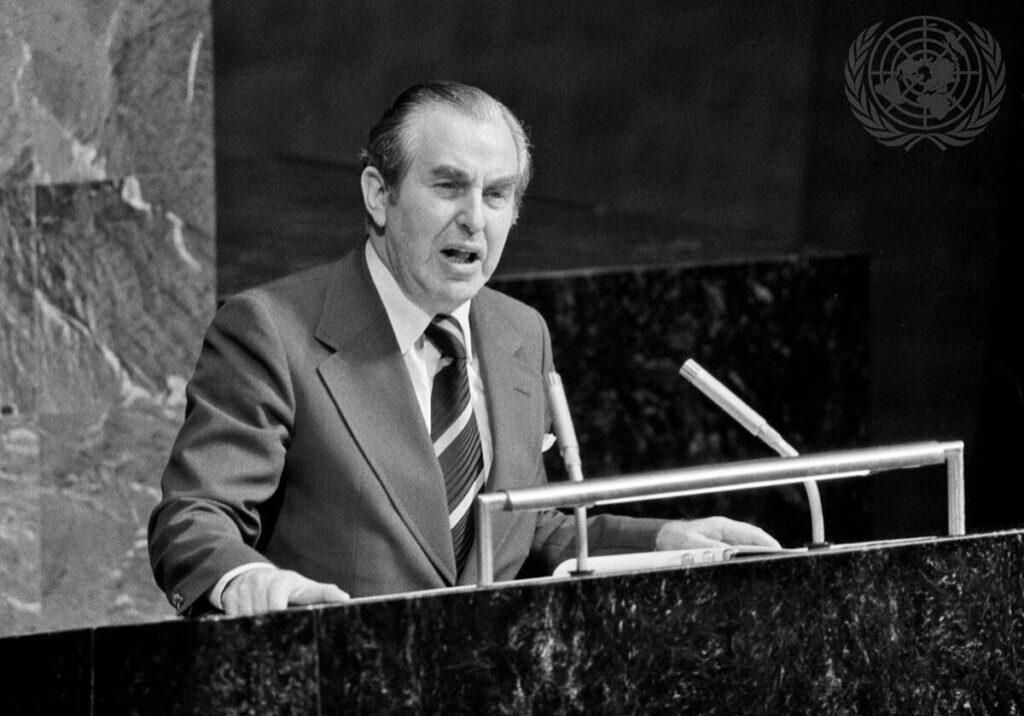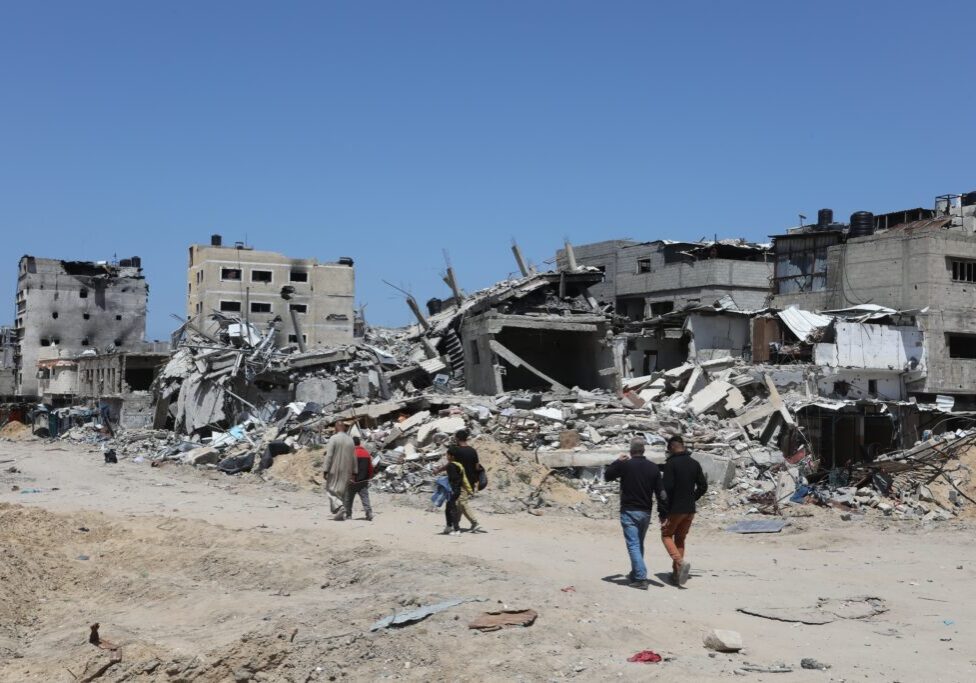Australia/Israel Review
Jerusalem syndrome
Nov 26, 2014 | Amotz Asa-El

Amotz Asa-El
The Temple Mount, arguably monotheism’s most active volcano, is smoking again.
The hilltop where a universalistic King Solomon built, as he saw it, a shrine whose tenant would be God and whose pilgrims would be “all the people of the world,” returned in October to its more familiar role as a source of division – witnessing and also igniting violence, agony, and strife.
The violence has evolved steadily since July along the so-called seam-line that runs between Jerusalem’s Jewish and Arab-majority neighbourhoods. It began with attacks on the light railway system which unites Israel’s capital, following the murder by Jewish terrorists of Palestinian boy Mohamed el-Khudeir, which in turn followed the kidnapping and murders of three Israeli teenagers by Hamas terrorists. It then gradually evolved into the frequent throwing of stones and Molotov cocktails and shooting of firecrackers at various places where Arab and Jewish neighbourhoods intersect.
As the summer’s fighting in Gaza unfolded, tensions along Jerusalem’s ethnic seamlines grew, further fuelled by official Palestinian rhetoric like President Mahmoud Abbas’ accusation at the UN that Israel had “committed genocide.”
By mid-November the charged atmosphere produced three drive-over attacks, one shooting and axe rampage in a synagogue, another shooting attack, and two knifings in which a combined ten Israelis were murdered and 33 injured within the scope of one month.
Two of the driving attacks were carried out in Jerusalem in the space of two weeks when terrorists rammed regular cars into unsuspecting passengers at light-railway stations. The fatalities in these attacks were a three-month-old baby, a Border Police officer, a yeshiva student, and a 23-year-old woman who had recently immigrated from Ecuador.
The perpetrators were shot by police in the aftermath of their attacks, one after emerging from his car and accosting passersby with a crowbar.
A third driving attack – waged hours after a soldier was stabbed to death outside a bustling train station in Tel Aviv – took place south of Jerusalem, outside the West Bank community of Alon Shvut. A Palestinian driver there struck a 26-year-old woman, then emerged from the car wielding a knife with which he stabbed the woman dead, then crossed the road and began attacking other passersby before being shot by a nearby security guard.
And then, on the morning of Nov. 18, two Palestinians burst into a synagogue in an ultra-Orthodox neighbourhood in western Jerusalem, drew a pistol and fired at the worshippers before rushing them with axes, killing four and injuring eight before two passing police officers rushed to the scene and shot the two dead. One police officer later died from his wounds.
All these corresponded with the ordinary definition of terror, as their targets were random passersby. Another attack, however, carried out between the two drive-over attacks in Jerusalem, targetted a specific person. Rabbi Yehuda Glick is his name, son of the founder of Ben-Gurion University Medical School – a red-bearded, bespectacled, 49-year-old father of 14 who dedicated his life to opening Temple Mount for Jewish prayer.
For the past 47 years, since the Six Day War, the arrangement on Temple Mount has been that it is administered by its Muslim custodians, called the Waqf, while Jews – and Christians – can visit the 37-acre compound during limited hours, but cannot hold prayers there.
It was a great Israeli concession, considering the intense Jewish memory of the ancient Temples there which, until 70 CE, were once the centre of Jewish ritual. Until then, the ancient Jewish legislature passed its laws and the ancient Jewish Supreme Court issued its rulings on the Mount, while multitudes of pilgrims flocked there from three continents.
Jews believe it is the site where Abraham attempted to sacrifice Isaac.
Muslims believe Abraham’s intended sacrifical victim was Ishmael and the Mount is also the site of the Prophet Muhammed’s “Night Journey” described in Koran. It houses the oldest existent Muslim shrine, the Dome of the Rock, completed in 691 CE and the large al-Aqsa Mosque, first built in 705 CE but repeatedly reconstructed since.
The Israeli decision, made by then-Defence Minister Moshe Dayan and prime minister Levi Eshkol, was driven by respect for both Muslim sensitivity and Jewish law, which banned Jewish entry to the humble summit between the Mount of Olives and Mount Zion for fear of inadvertently desecrating the “Holy of Holies” which once existed there.
However, the religious ban was revised by some rabbis, who contend that the prohibition pertains only to the specific area where it is estimated the Holy of Holies stood until the Temple’s destruction. Consequently, small groups of religious nationalists began entering the complex in growing frequency and illicitly or surreptitiously praying there – raising among the Waqf claims that they were agents of the Israeli Government.
The Jewish Temple Mount worshippers are not homogenous. Some just want to pray at Judaism’s holiest site, others are dedicated to theoretical study of the ancient Temple’s rituals, still others are actively preparing to perform those rituals but are leaving it to God to restore the Temple, and some are preparing plans for the Temple’s reconstruction.
The activists also vary in their attitudes toward the Mideast conflict. While some are followers of the late Rabbi Meir Kahane, who was defined by the Supreme Court as a racist and banned from running for the Knesset, others believe, like Solomon, that the Jews should share the Temple Mount with other faiths, and that the mosques should remain there even in the messianic Days to Come, when, according to traditional Jewish belief, the ancient Temple will be rebuilt.
One of those universalists is Glick, who was shot three times in the chest by a man on a motorcycle as he emerged from an auditorium moments after addressing an event entitled “Israel Returns to Temple Mount.”
The alleged gunman, an Islamic Jihad activist who had spent 11 years in jail, fled the scene, but was located before dawn in his home in the Jerusalem neighbourhood of Abu-Tor. Surrounded, he opened fire at the troops, who returned fire and killed him.
Glick survived, and after two weeks on a respirator was breathing independently, but the attempt on his life turned the spotlight on the Temple Mount.
Following the shooting, police momentarily sealed the compound for the first time since 2000, when riots emanating from Temple Mount, following then-Opposition Leader Ariel Sharon’s visit there, marked the beginning of the Second Intifada.
Meanwhile, police braced for more violence, trebling their ordinary presence in the capital to 3,000 officers, setting up roadblocks, flying cameras on balloons and dispatching a helicopter to hover above it all. Jewish activists who tried to break into the Temple Mount were blocked and several were arrested. Still, after the second murderous car attack in Jerusalem riots broke out on the Temple Mount as police seized arms stockpiled there to facilitate violent unrest.
Things were already bad enough when a local situation up north made them even worse.
In the Israeli Arab town of Kafr Kana, four miles from Nazareth, police arrived to arrest a local resident who had thrown a grenade as part of a local family feud. While in their car, the policemen were attacked by a knife-wielding man. The cops exited the car to confront the man. One fired a bullet, the man fell and was evacuated to hospital by the police, but hours later he was dead.
Now Arabs were marching in protest throughout the Galilee, too, and Israeli Arab politicians called on all Arab businesses to close shop in solidarity, repeating the accusation that “Israel is threatening al-Aqsa.”
The common Israeli suspicion, that there was a premeditated Palestinian effort to agitate Jerusalem generally, and the Temple Mount in particular was enhanced when Mahmoud Abbas sent a condolence letter to the family of Glick’s attacker, and when Abbas accused Israel of attacking Muslim, and also Christian, holy sites.
Alongside Abbas’ statement came his Foreign Minister Riyad al-Maliki’s claim that Israel was waging religious war; PA Spokesman Nabil Abu-Rudeina’s announcement that Israel had declared war on the Palestinian people and their Fatah organisation’s call for “a day of rage” throughout the West Bank.
On the Israeli side of the divide, some politicians seemed to be seeking ways to fan the flames that others were trying to extinguish.
Deputy Knesset Speaker Moshe Feiglin, a radical member of the Likud, visited the Temple Mount following Glick’s shooting, as did Deputy Transport Minister Tzipi Hotoveli, another representative of the party’s right wing. Both, by the way, are Orthodox, as is Knesset Foreign Affairs and Defence Committee Chairman Zeev Elkin, who before the recent violence called on the Likud “to take up the cause of the Temple Mount.”
To the right of the Likud, in the Jewish Home Party headed by Economy Minister Naftali Bennett, there was unanimity about the need to change the status quo on the Temple Mount, a cause presented as a matter of freedom of worship – an argument that Israeli liberals agree is difficult to dismiss.
Bennett and his Orthodox colleagues were unimpressed with Sephardic Israeli Chief Rabbi Yitzhak Yosef’s unequivocal ruling that entering the Temple Mount was strictly forbidden, a view Yosef publicly asserted during the funeral of one of the driving attacks’ victims.
The pressure from the right had one notable exception: ordinarily hawkish but also secular Foreign Minister Avigdor Liberman surprised pundits when he criticised the Temple Mount activists and called for the preservation of the status quo.
Still, despite this improbable assistance, Prime Minister Binyamin Netanyahu was caught between the political pressure he faced from within and the diplomatic pressure to calm the situation that was building from without.
One key player in the Temple Mount’s diplomacy is Jordan, whose special status in this regard is enshrined in its peace accords with Israel. Amman’s special role is also agreeable to the Palestinian Authority.
Responding to the brief Temple Mount closure, and surely bearing in mind his namesake and great-grandfather’s assassination on the Temple Mount in 1951 after having negotiated a secret peace deal with Israel – King Abdullah now recalled his ambassador from Tel Aviv for consultations.
Alarmed, Netanyahu called King Abdullah and reiterated his commitment to maintain the status quo on the Temple Mount. At the same time, Israeli diplomats sent the same message to governments worldwide.
Finally, on November 13, Netanyahu, Abbas and US Secretary of State John Kerry met at King Abdullah’s palace in Amman. There is no video footage from there, only still photos, which left the impression that Netanyahu and Abbas did not meet directly. The two men did, however, agree to heed the King’s and Secretary’s request to uphold the status quo, restore order, and preach calm.
Down in the field, meanwhile, a brief tense quiet descended on Jerusalem that lasted a bare five days before being shattered by the attack on the worshippers in Jerusalem’s Bnei-Torah Synagogue. The previous night, at the Western Wall, below the Temple Mount, Jews had been chanting “blessed be he who passes day and ushers nightfall,” while above their heads, the Temple Mount’s muezzin was announcing “God is great.” Both were back the following evening as well. Such is contemporary Jerusalem’s version of Solomonic Justice.
Tags: Israel






